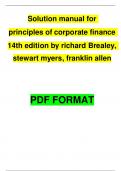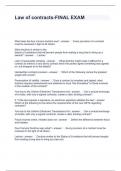Other
Solution manual for principles of corporate finance 14th edition by richard Brealey, stewart myers, franklin allen
- Course
- Institution
Solution manual for principles of corporate finance 14th edition by richard Brealey, stewart myers, franklin allen
[Show more]




